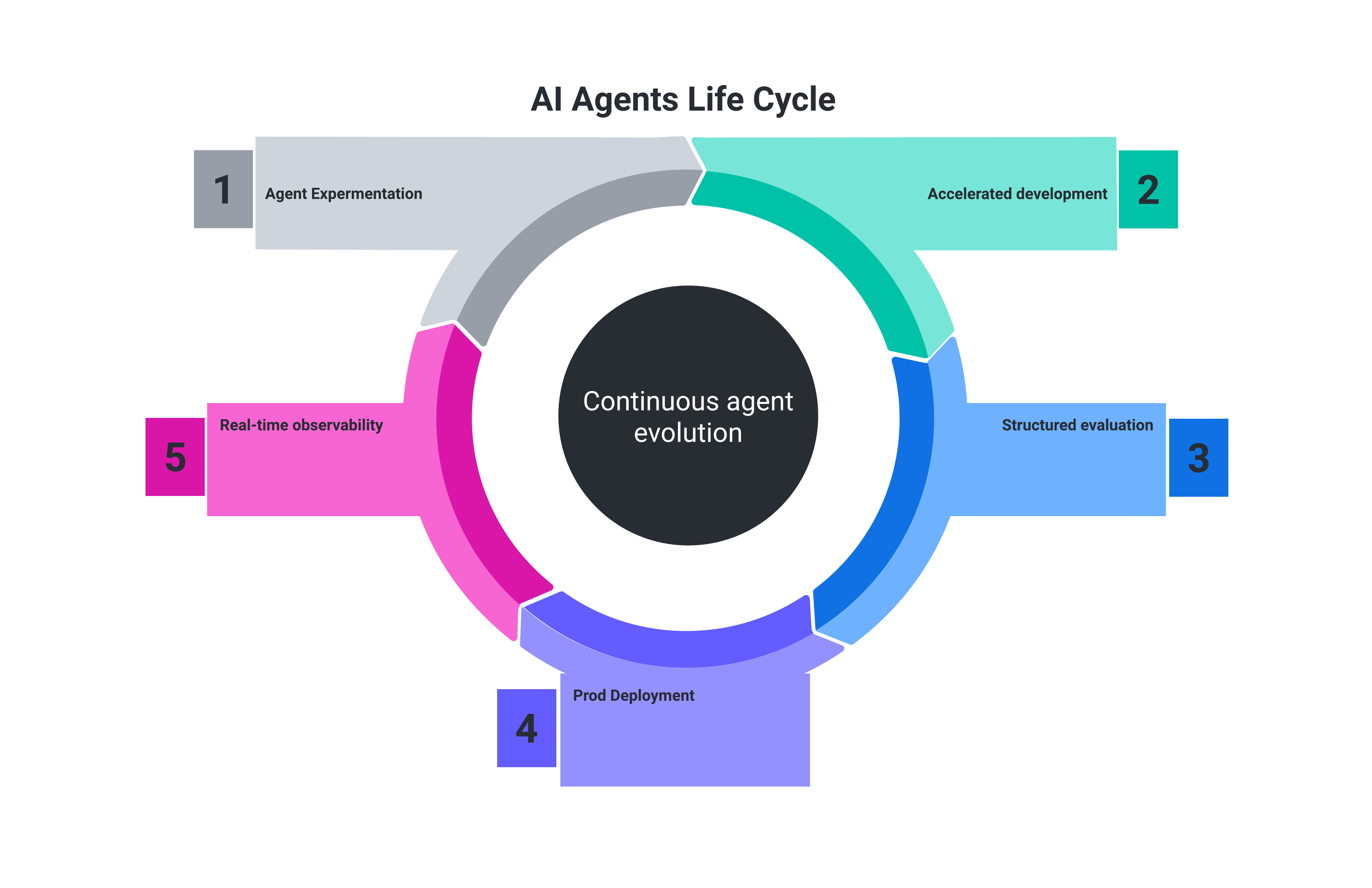Building Scalable Agentic AI Platforms: A Technical Deep Dive - Part 1
An in-depth exploration of architectural patterns and best practices for building enterprise-grade AI platforms that scale.
Before building Agentic AI platforms, Let’s discuss a few things. First, we need to understand
- What is an Agentic AI platform?
- When and why should an organization build or need an Agentic AI platform?
- When should you not use an Agentic Platform?
What is an Agentic AI Platform?
Agentic AI platform is a collection of modular components that would facilitate end-to-end management life cycle of the AI Agents. It accelrates the quick experimentation, accelerated development, structured evaluation, streamlined deployment, real-time observability, and continuous agent evolution.

Let’s look at the key components of an Agentic AI platform through its lifecycle:
-
Agent Experimentation: Agents needs experimentation like anyother datascience projects. You have identified the problem and wish to solve with AI Agents. You choose the right LLM (Large language model), craft your prompt, build tools, supply your data and test it. To Support this phase, we need these modular components,
- LLM Gateway - Choose the perfect LLM.
- Prompt templates - Choose the right prompt template for the right LLM that has been tested.
- Agentic Architecture - Different problem requires differnt architecture, single or multi-agent
-
Accelerated Development: Once the initial experimentation proves promising, the platform facilitates faster development through:
- Re-use the same prompt from experimentation
- Re-use a Pre-built tools for agents (probably using Model Context Protocol (MCP))
- Build your MCP tools
- Use the Prod LLM gateway with load balancer pre-configured.
- Use the Execution environment that the platform offers (Optional)
-
Structured Evaluation: Before deployment, agents need rigorous testing and evaluation:
- Standard Agent Benchmarks (pre-built and build a new one for your case)
- Performance benchmarking (Is your LLM slow in response?)
- Safety and ethical compliance checks (Is the Agent responding good for unexpected questions or attacks?)
- Responsible AI Check (Is the Agent producing anything that it shouldn’t?)
-
Production Deployment: The platform streamlines the process of deploying agents to production:
- Version control (Doesn’t your Agent evolve like APIs?)
- Environment management (How easy if there is a pre-built environment for Agents?)
-
Real-time Observability: Once deployed, agents need continuous monitoring:
- Performance metrics (is your Agent slow?)
- Usage analytics (How much users are liking it?)
- Anomaly detection (Is there a bad behavior?)
Now that we know about the high level features of the Agent AI platform, lets address the importatnt question.
Should you even consider an Agentic AI platform?
Lets be practical, Agentic platforms need huge upfront investment. I would say a dedicated 10-12 member team (may be 2 teams) is required. I woudln’t market this as Cost-effective way of building agents. But if your organization is going to build 1000’s of agents and your enterprise has more than 100’s teams. You should consider for a Platform. You don’t want to re-invent the wheel there. A deidcated team for the platform makes sense there.
If you are a small team or a small organization, then having a re-usable components of these platforms should be enough for faster release cycles.
Now that we know what is the agentic platform and why you should consider building one, let’s deep dive in Part-2